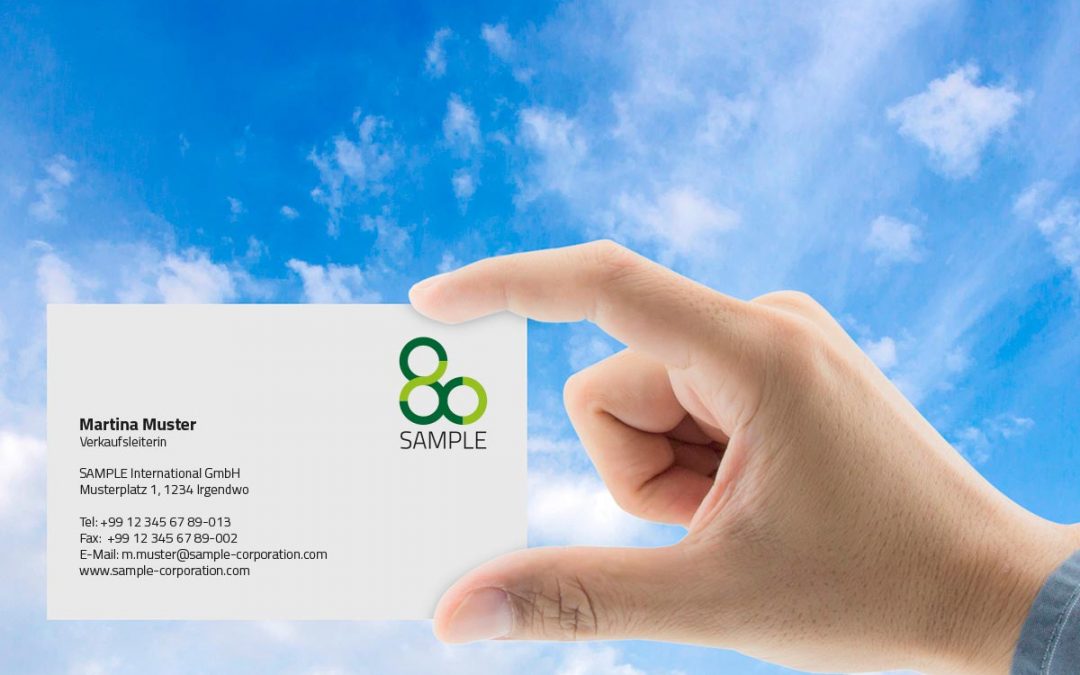Even though business cards will certainly not be the biggest items in your environmental balance book: By choosing paper wisely, you can reduce the burden on the planet at least a tiny bit. Here are the main options.
Almost a given: chlorine-free bleached paper
Virtually all papers produced in Europe are already manufactured without the use of elemental chlorine, recognizable by the abbreviation ECF. The greatest environmental impact – the release of dioxins – is thus avoided. For totally chlorine-free bleached papers (TCF), not only is the use of elemental chlorine avoided, but also all chlorine compounds. In principle, TCF would therefore be the more environmentally friendly choice, but modern ECF mills today – at least according to the paper industry – already achieve a similarly good environmental balance as TCF.
Particularly resource-saving: recycled paper
The most resource-saving option is of course a cardboard made of 100 % recovered paper. There are some of these on the market, but of course you should not expect extremely white papers. A good compromise is paper that is only partly made of recovered paper.
Sustainable: paper from certified raw materials
When using paper made from fresh fibres (i.e. from non-recycled material), you should ensure that the wood used for the paper comes from controlled sources. The most widely used label for this is the FSC label. FSC stands for “Forest Stewardship Council” and is an organisation that promotes environmentally friendly, socially beneficial and economically viable forestry. You can read more about this on the website of FSC Germany, for example.
Not ideal for recycling: cellophane wrapping
Not particularly environmentally friendly are cellophaned (= foil laminated) business cards. In addition to the paper, a film is also applied to protect the card and give it a special surface – for example, matt scratch-resistant or high-gloss. (Read more in our article Elegant and robust: Foil-laminated business cards). The film itself is wafer-thin and thus only slightly impairs the environmental balance. However, there are problems with recycling: especially cards with cellophane on both sides hardly dissolve during the recycling of waste paper – they are therefore usually screened out of the paper pulp as a whole and finally end up in the residual waste. Ecologically more favourable finishing methods are, for example, water-based dispersion varnish or partial 3D varnishing.
Special bonus: climate-neutral production
Whether recycled or not, FSC-certified or not – paper is by far the largest contributor to the CO2 footprint of business card production. There is no way around this, given the current state of technology.
That’s why there is a big extra bonus for your environmental balance if you have your cards produced in a CO2-neutral way. This does not prevent CO2 from entering the atmosphere. But the printing company commits itself to neutralize the effect by financing measures that avoid CO2 – which can also be taken on on the other side of the world. Incidentally, this does not include raw materials such as paper and ink, but also all other CO2 sources – e.g. the heating of the facility, the travel and business trips of employees and much more. The additional charges – especially for business cards – are minimal. Some business card providers – e.g. prinux – already compensate the entire production process on their own initiative and bear the corresponding costs themselves.


